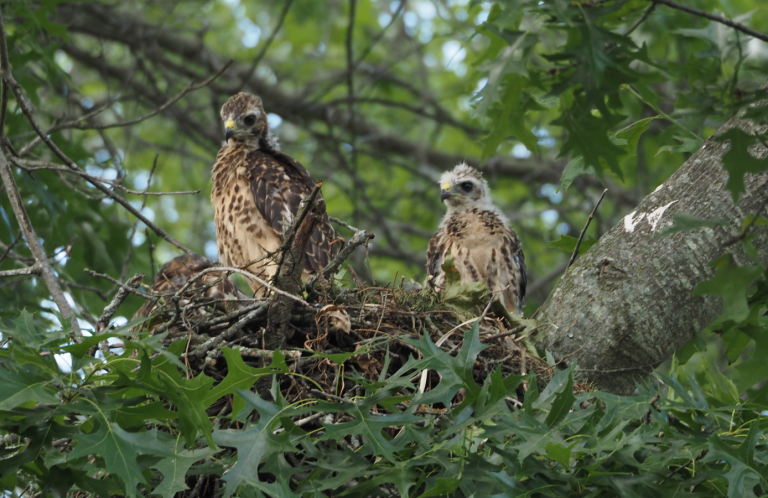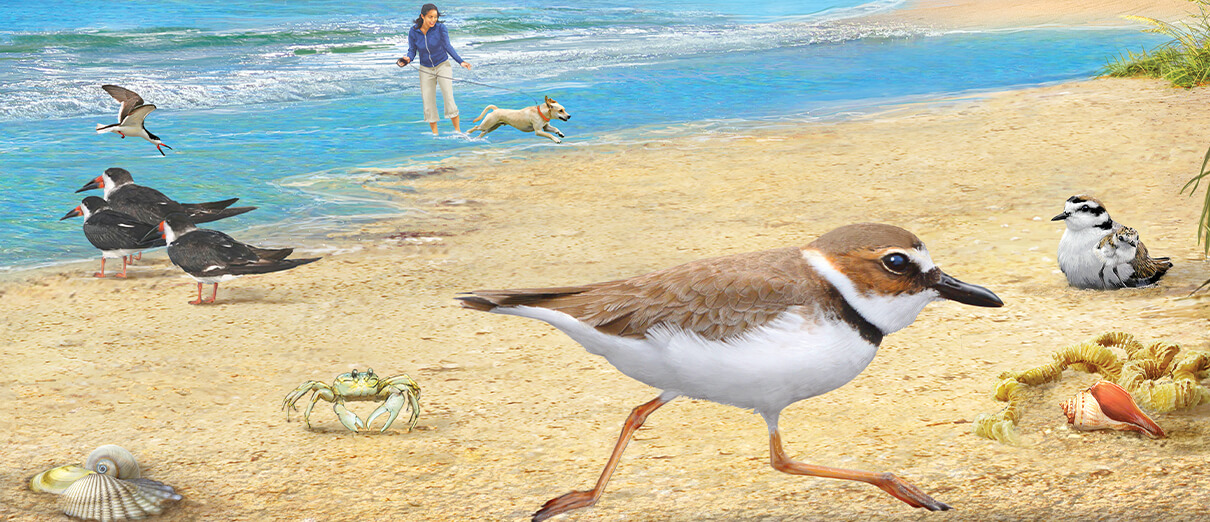To Protect Birds from Wind Turbines, Look to Hawai‘i's Approach
The state of Hawai‘i has an ambitious goal of achieving 100 percent renewable electrical energy by 2045. As some of the most isolated islands in the world, Hawai‘i's costs for importing oil are very high. A move towards generating renewable electrical energy thus makes a lot of economic and environmental sense.
Unfortunately, this plan is not without its own environmental hazards. It means vastly more wind turbines and solar farms on or around the islands, and one of the biggest challenges is their potential impact on Hawai‘i's endemic birds and bats.

Hawaiian Petrel, Jim Denny
As result of its long isolation, Hawai‘i is home to many bird species that are found nowhere else in the world. These include threatened and endangered species and subspecies, such as the ‘Alala (Hawaiian Crow), Nene (Hawaiian Goose), Hawaiian Common Gallinule, Hawaiian Black-necked Stilt, Pueo (Hawaiian Short-eared Owl), ‘Akohekohe, Hawaiian Petrel and many others. At least 95 of Hawai‘i's unique birds have already gone extinct, making conservation of the remaining endemic species and subspecies a very high priority.
Poorly sited wind energy projects on the mainland are killing hundreds of thousands of birds and bats annually, including threatened and endangered species. In the case of birds, that number goes into the many millions when wind projects' associated power lines and towers are also taken into consideration. As the number of turbines and power lines increases, these fatalities are mounting every year. The presence of turbines and power lines also drives away many species, including grassland birds and Greater Sage-Grouse, often resulting in brood failure.
Due to our intense interest and work on conserving endemic Hawaiian bird species, we have ramped up the tracking of wind and solar energy development in the archipelago. By analyzing all of the existing and proposed wind energy projects in the islands, we have noted that the current protocols used to evaluate and approve wind energy projects in Hawai‘i differ significantly from those used on the mainland.

Wind turbines, stock.xchng
What's Different About Hawai‘i?
To address the growing and recognized risk to threatened and endangered species, federal and state regulators have created protections that are currently unique to Hawai‘i. While far from perfect, we believe these protocols should, at minimum, also be employed on the mainland. Doing so would go a long way toward helping protect threatened and endangered birds and bats.
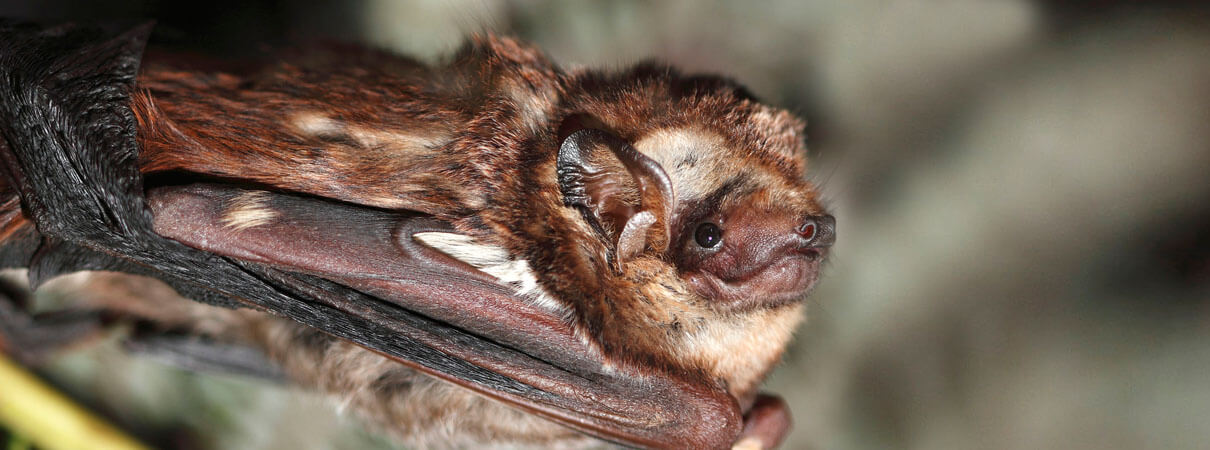
Hawaiian hoary bat, Jack Jeffrey
Environmental assessments, incidental “take” permits, and habitat conservation plans are required. Unlike in the continental U.S., the Hawai‘i Department of Land and Natural Resources (DLNR) and U.S. Fish and Wildlife Service (FWS) require that all proposed wind energy projects, whether on public or private lands, assess the possible risk to endemic native birds and the Hawaiian hoary bat (‘Ope‘ape‘a) and obtain state and federal approval before beginning construction. They also require that projects obtain incidental “take” permits under the Endangered Species Act and develop and implement habitat conservation plans that include mitigation for unavoidable harm to birds and bats. Although most forms of mitigation are currently unproven, this is still better than nothing.
Some areas are completely off limits to wind development. State and federal officials have declared the island of Kaua‘i totally off limits for any wind energy development due to the presence of many endangered species. This forethought and planning have been lacking on the mainland. Along with our partners, ABC requested that the Fish and Wildlife Service complete an environmental impact statement to determine where the nation's wind projects and their associated turbines and power lines should and shouldn't go based on their potential impact on threatened, endangered, and other protected species. We were subsequently told that the Department of the Interior and FWS did not have sufficient funds to undertake such a project.
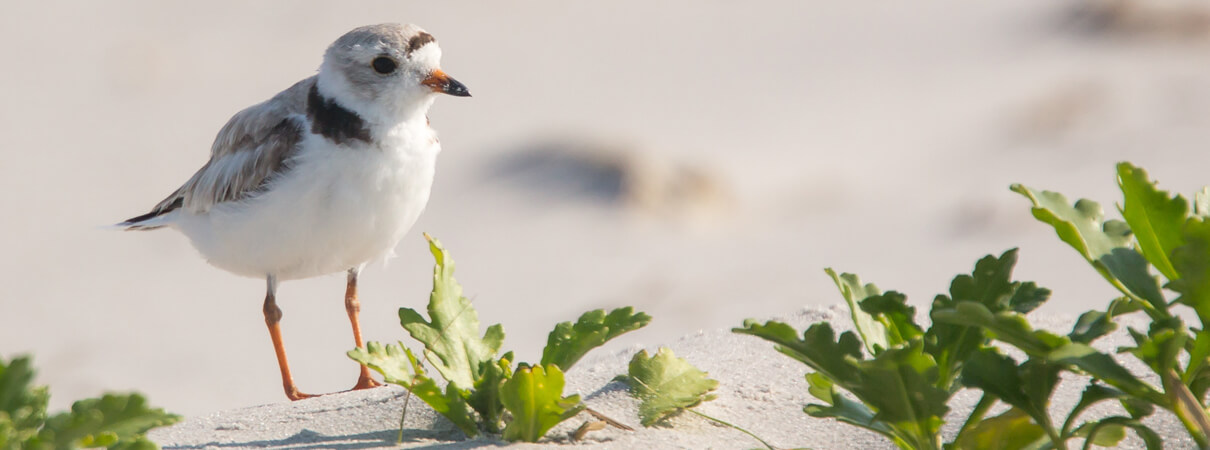
Piping Plover, Elliotte Rusty Harold/Shutterstock
There are ongoing attempts to develop regional habitat conservation plans, which are intended to allow wind energy development but protect endangered birds such as Whooping Cranes, Piping Plovers, and Kirtland's Warblers. This is a positive step. However, the devil will be in the details; our nation has not done very good job of siting wind energy projects so far.
All mortality data for birds and bats are collected by independent, third-party consultants. On the mainland, virtually all data showing how many birds and bats have died at a certain wind facility are collected and reported to regulators by consultants who are hired by the wind industry. In Hawai‘i, however, this work is done by independent, third-party experts. Wind developers in Hawai‘i are also subject to greater scrutiny, including expensive fines or even prosecution, for killing federally protected birds. Having trusted third-party consultants do this work and report directly to regulators avoids an obvious conflict of interest.
Transparency is another important area where Hawai‘i is doing well. One wind energy complex, Kaheawa I and II on the island of Maui, has killed 73 native birds and bats, including endangered species such as the Hawaiian Petrel and Nene. It would have been virtually impossible for the public or concerned conservation organizations to obtain this data on the mainland.
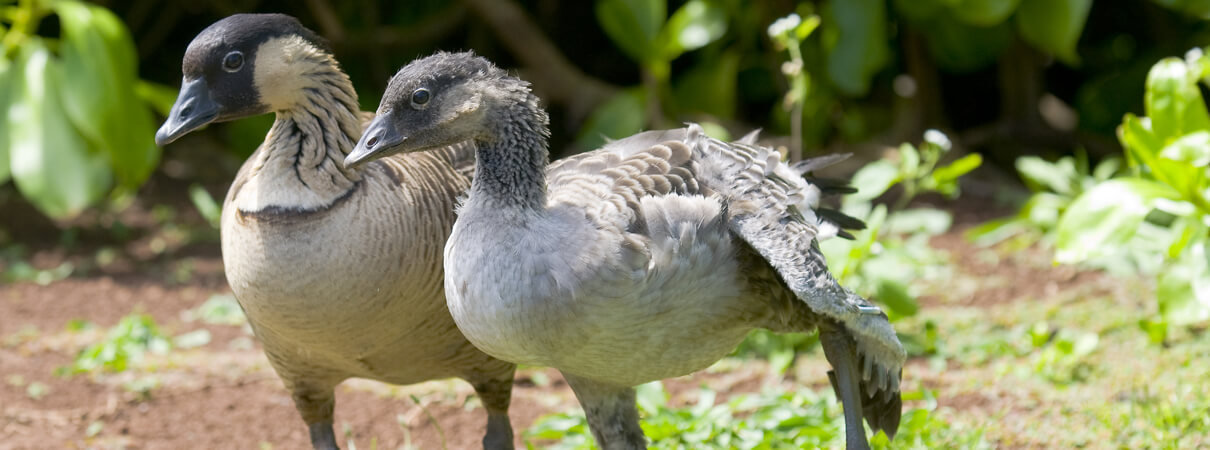
Nene, Steve Oelenschlager/Shutterstock
Data on bird and bat mortality are accessible to the public. In Hawai‘i, all bird and bat mortality data are placed in a database that is open to public scrutiny upon request. This is in stark contrast to what occurs on the mainland, where these data are typically collected by wind companies' paid consultants and therefore considered private property that is held secret from the public. One company, PacifiCorp, recently sued the FWS to keep its data hidden. We believe the public has a right to know: After all, our nation's native birds and bats do not belong to wind energy companies, whether they are on public or private land. They belong to the American people and are held in trust for this and future generations.
Lessons on Wind Turbines for the Future
Why does Hawai‘i have such a different approach to wind energy? Regulators have been able to put these unique protocols into place because of the large number of critically endangered birds and an endangered bat that inhabit the islands. But there's no reason why these measures can't be implemented on the mainland as well. There are plenty of species—including rapidly declining warblers like the Cerulean Warbler—that need such safeguards, not to mention federally protected species such as other migratory birds and eagles.
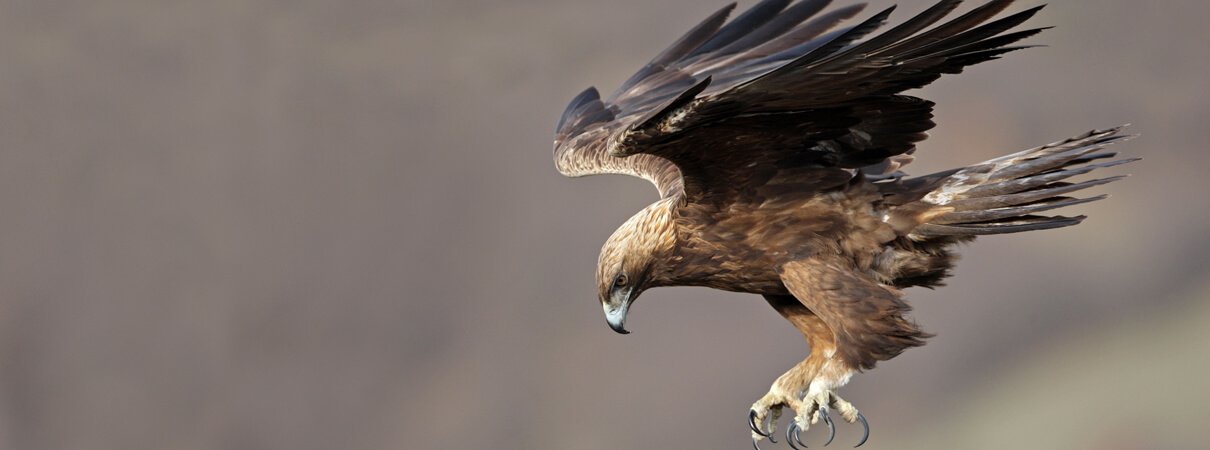
Golden Eagle, Emil Enchev/Alamy Stock Photo
Here at ABC's Bird-Smart Wind Energy Campaign, we will continue to fight for improved regulation of the wind industry and to enforce our current wildlife protection laws. Climate change is a serious concern, but there are other effective ways to address it than building thousands of wind turbines and hundreds of miles of new power lines and towers in places where there are large concentrations of birds.
Our nation's ecologically important birds and bats should not be collateral damage in our battle against climate change. We can do so much better.
Correction: An earlier version of this article incorrectly stated the number of native birds and bats killed by the wind energy complex Kaheawa I and II on the island of Maui. Seventy-three native birds and bats have died there, not more than 200, as the article originally stated.
 Michael Hutchins, Director of American Bird Conservancy's Bird-Smart Wind Energy Campaign, earned his Ph.D. in animal behavior at the University of Washington. Prior to ABC, Michael was Director/William Conway Endowed Chair, Department of Conservation and Science, at the Association of Zoos and Aquariums for 15 years, and Executive Director/CEO at The Wildlife Society for seven years. He has authored over 220 articles and books on various topics in wildlife science, management, and conservation, and has traveled to over 30 countries to pursue his passion for conservation.
Michael Hutchins, Director of American Bird Conservancy's Bird-Smart Wind Energy Campaign, earned his Ph.D. in animal behavior at the University of Washington. Prior to ABC, Michael was Director/William Conway Endowed Chair, Department of Conservation and Science, at the Association of Zoos and Aquariums for 15 years, and Executive Director/CEO at The Wildlife Society for seven years. He has authored over 220 articles and books on various topics in wildlife science, management, and conservation, and has traveled to over 30 countries to pursue his passion for conservation.





































